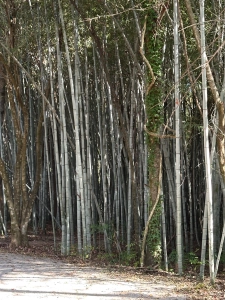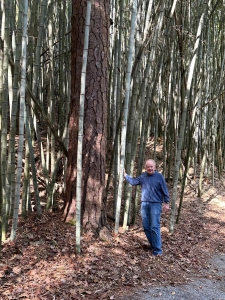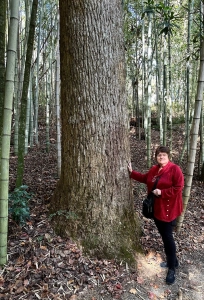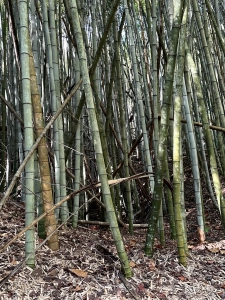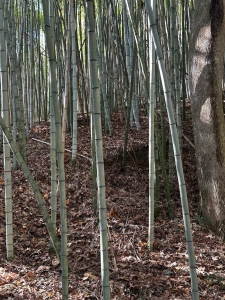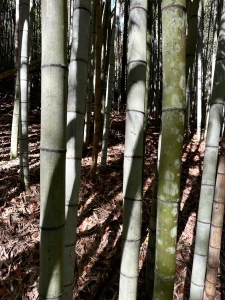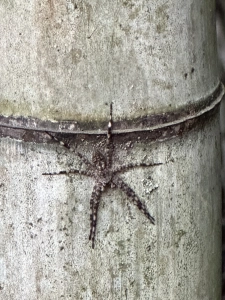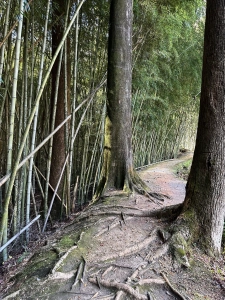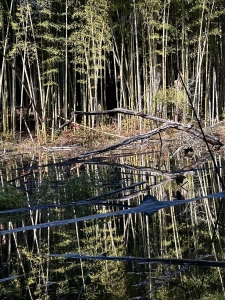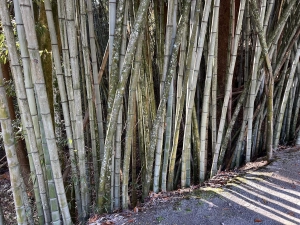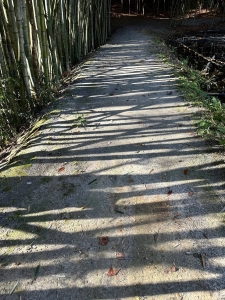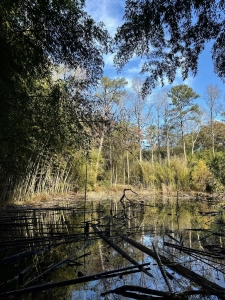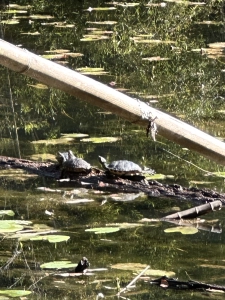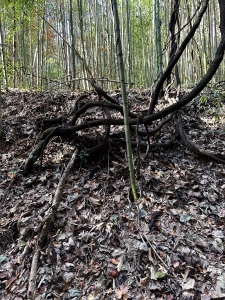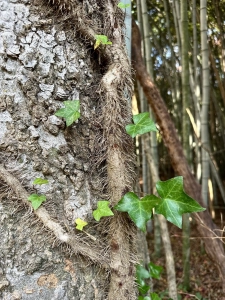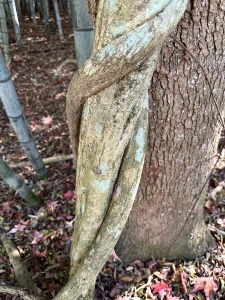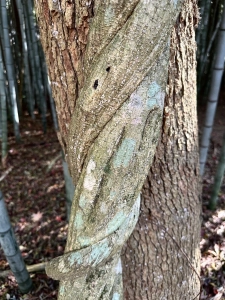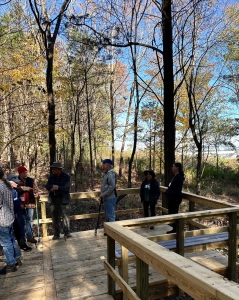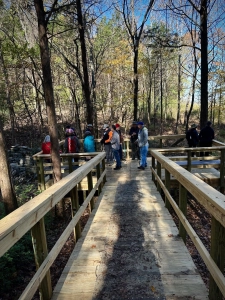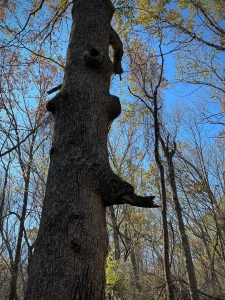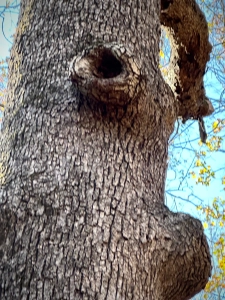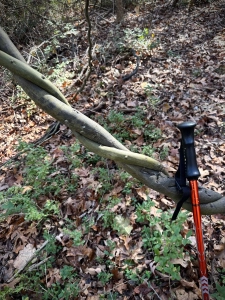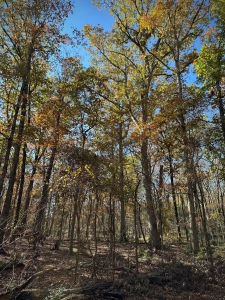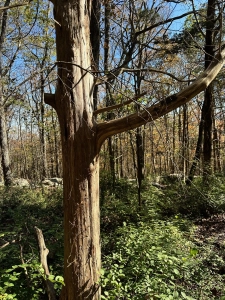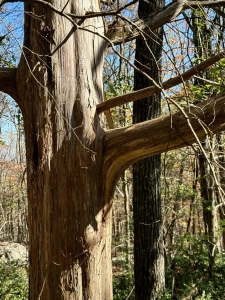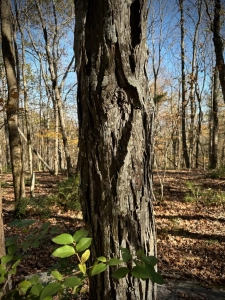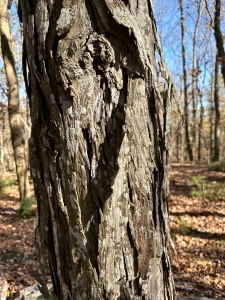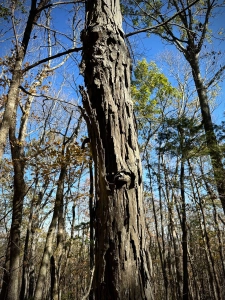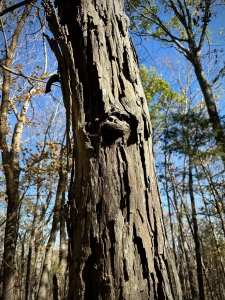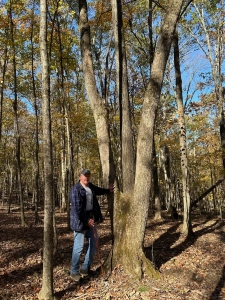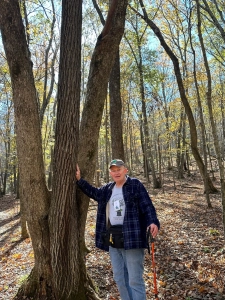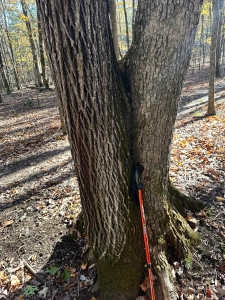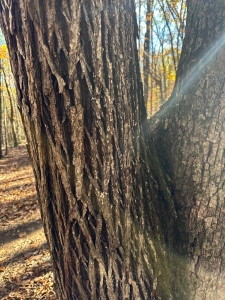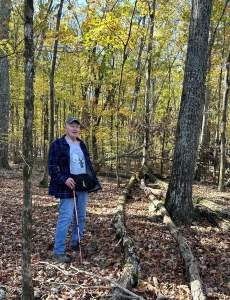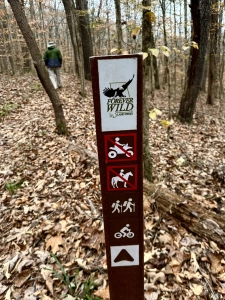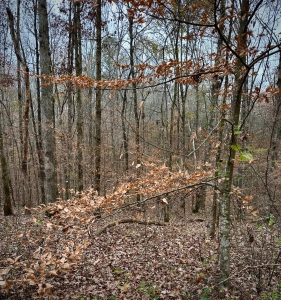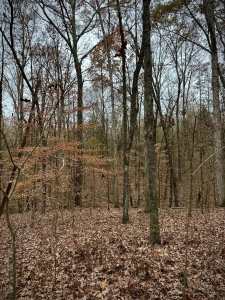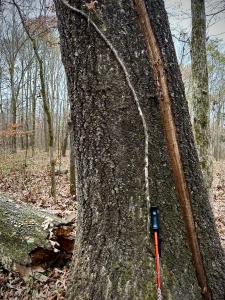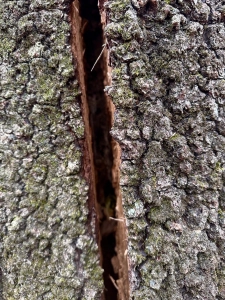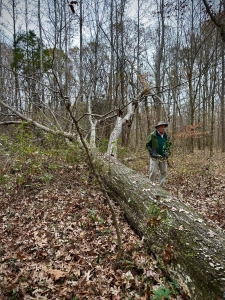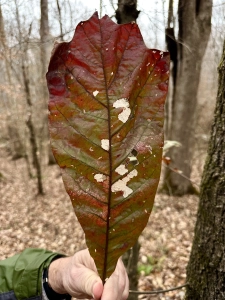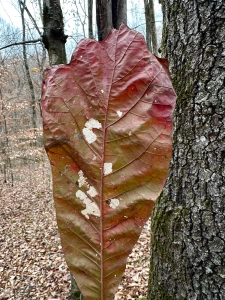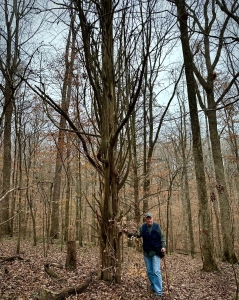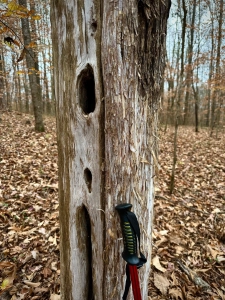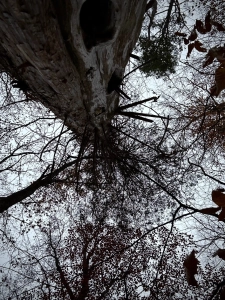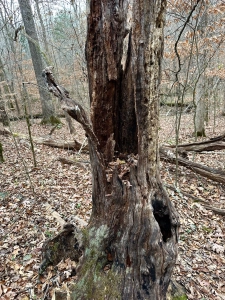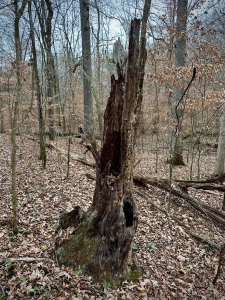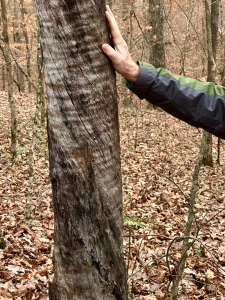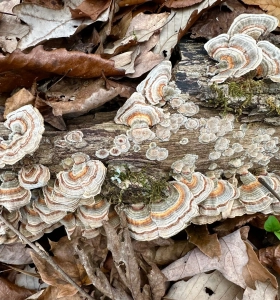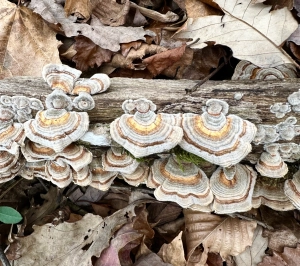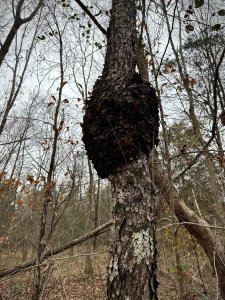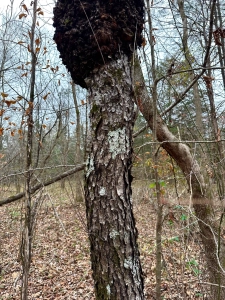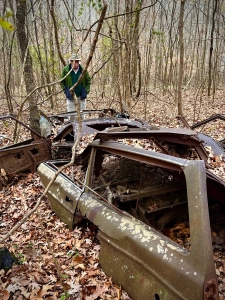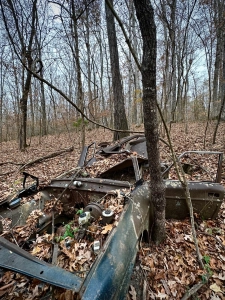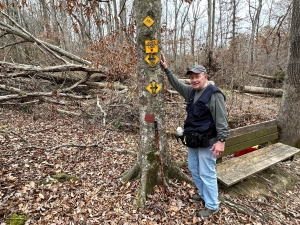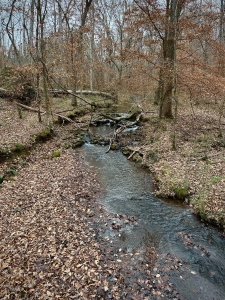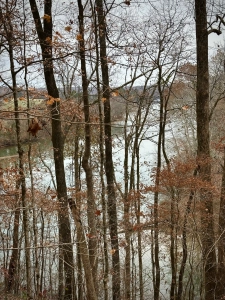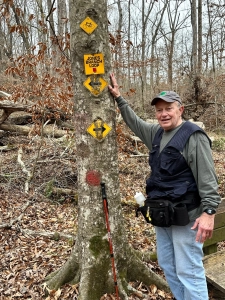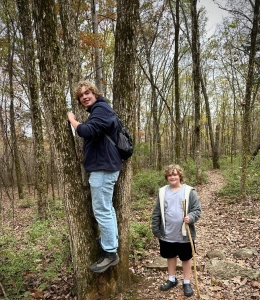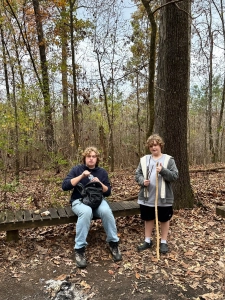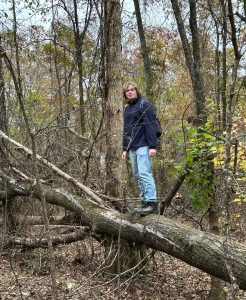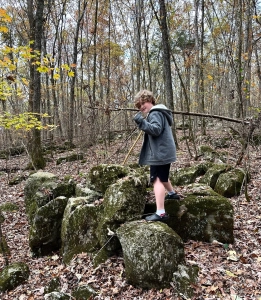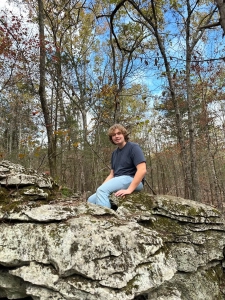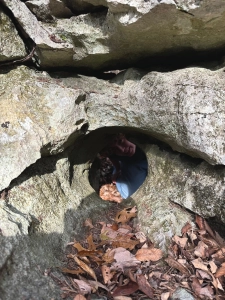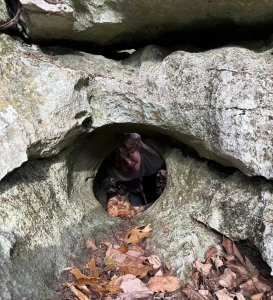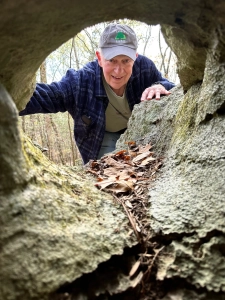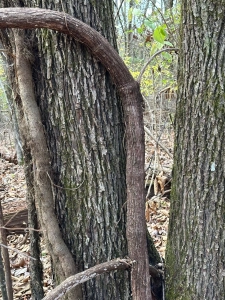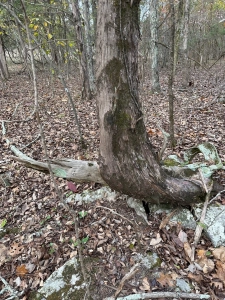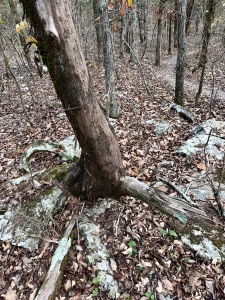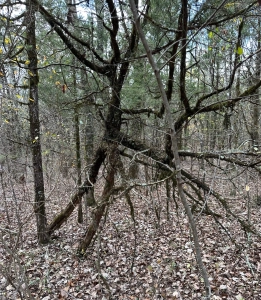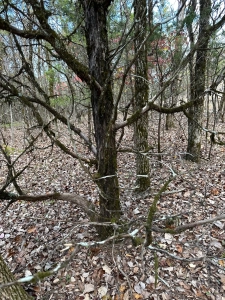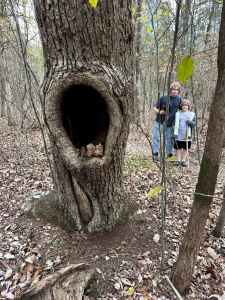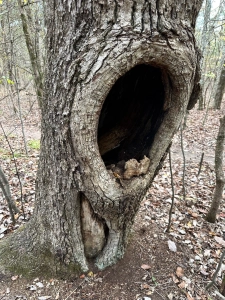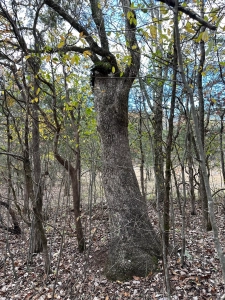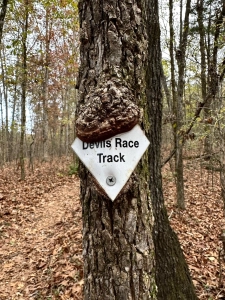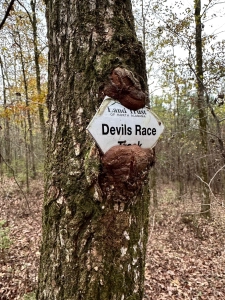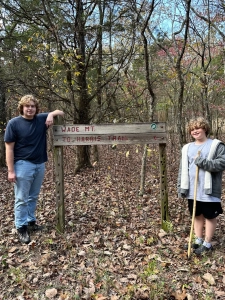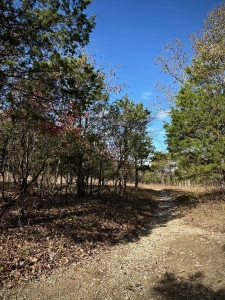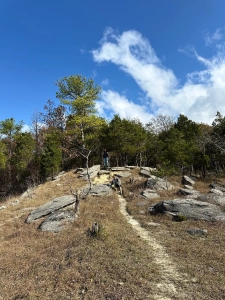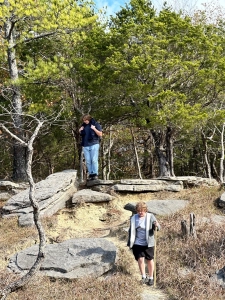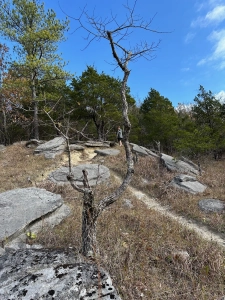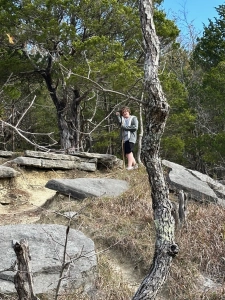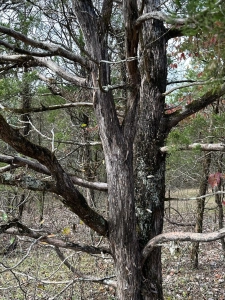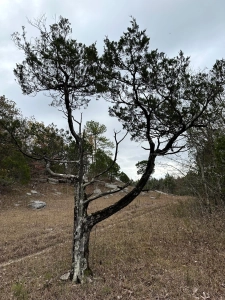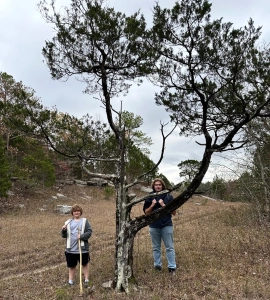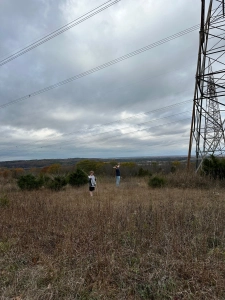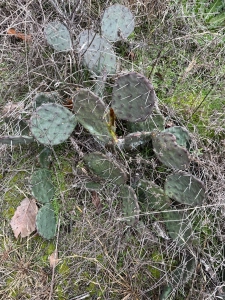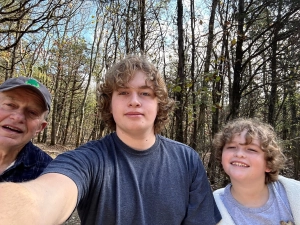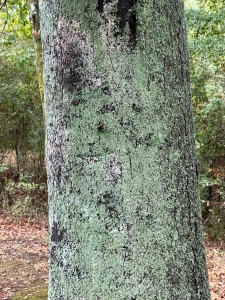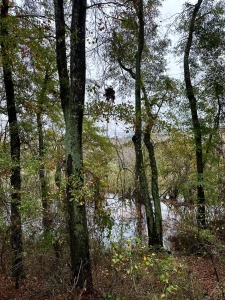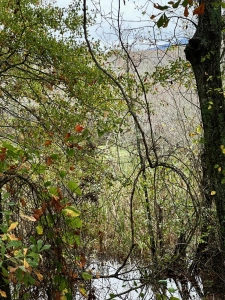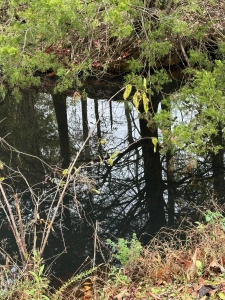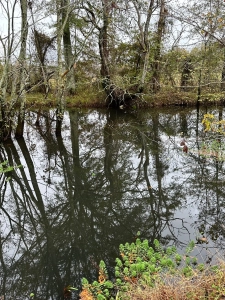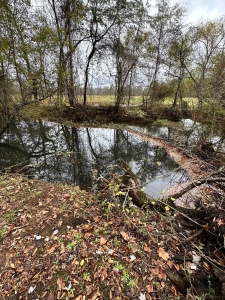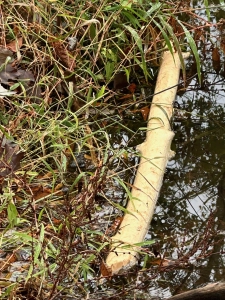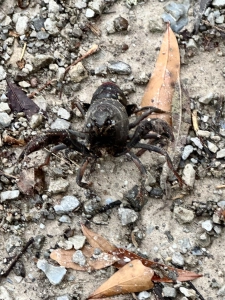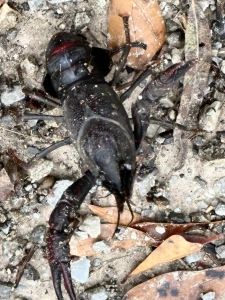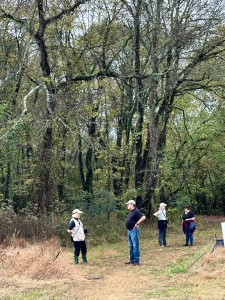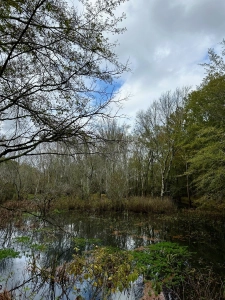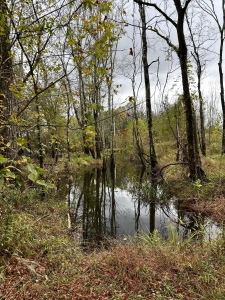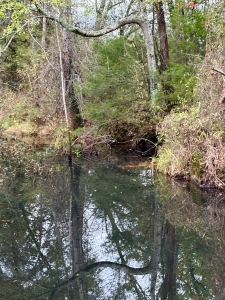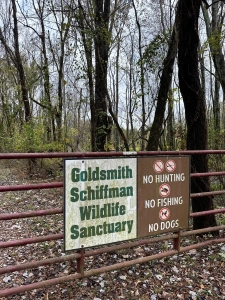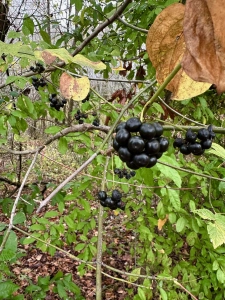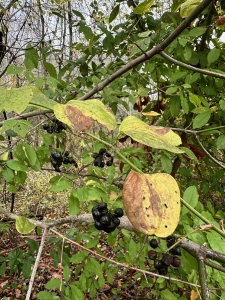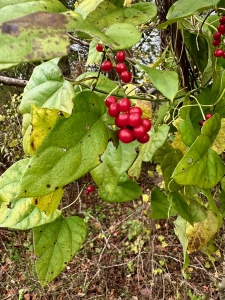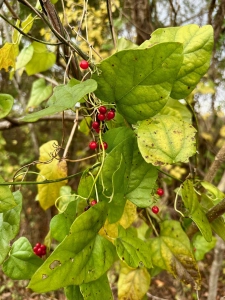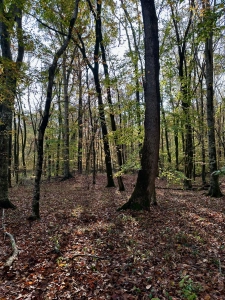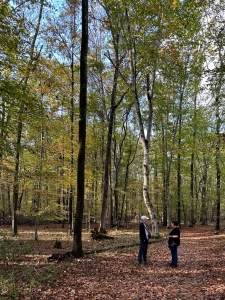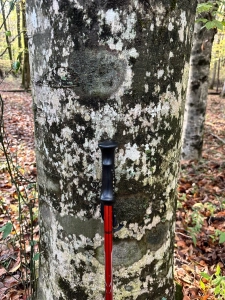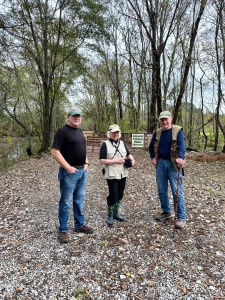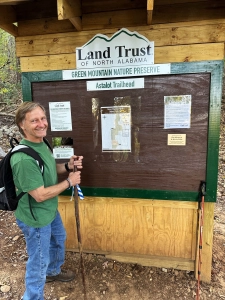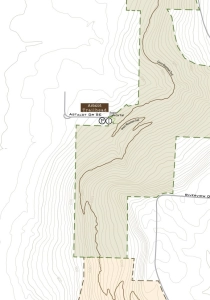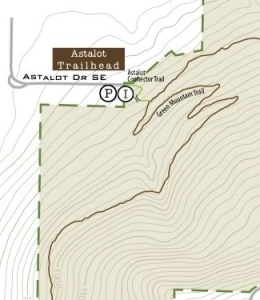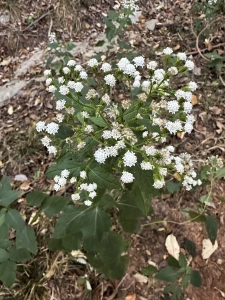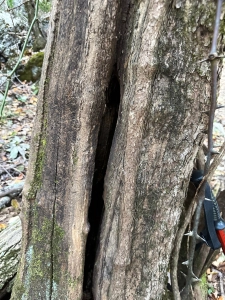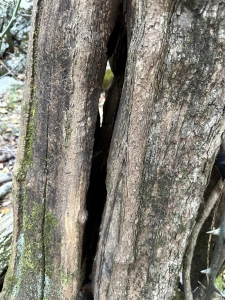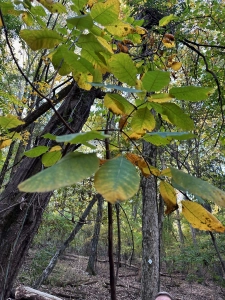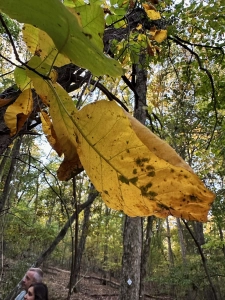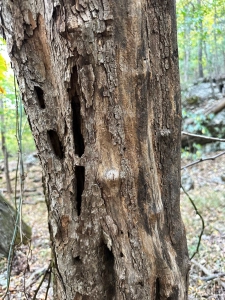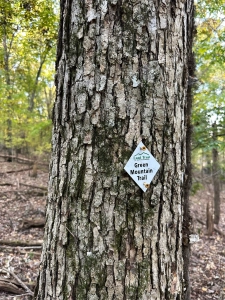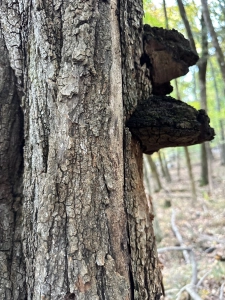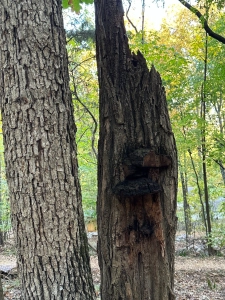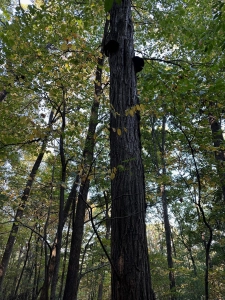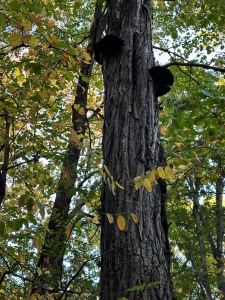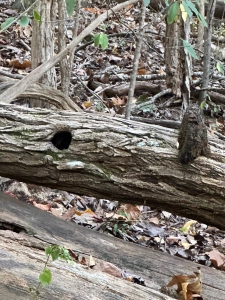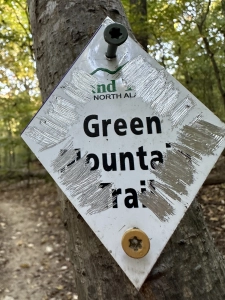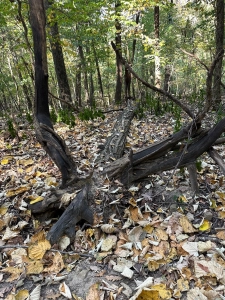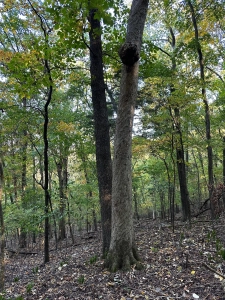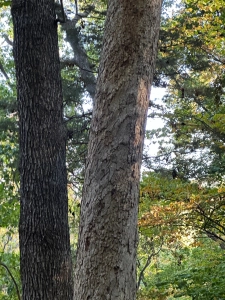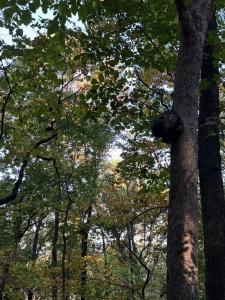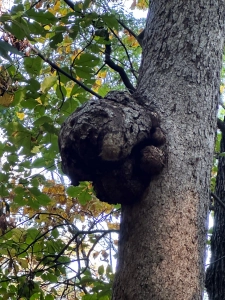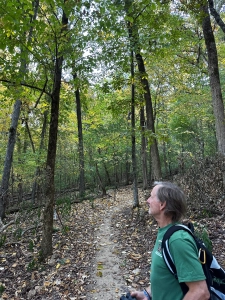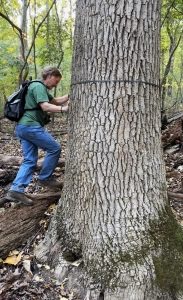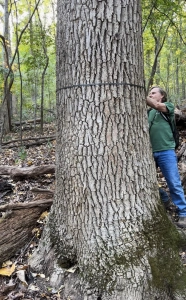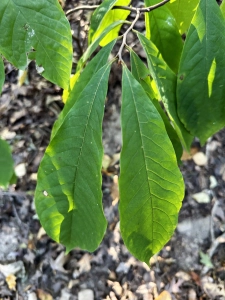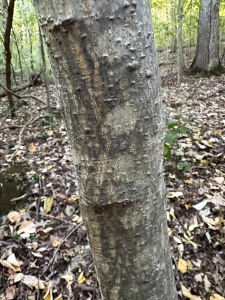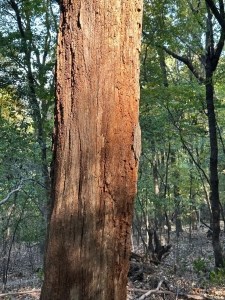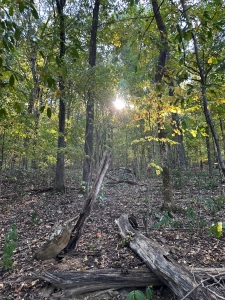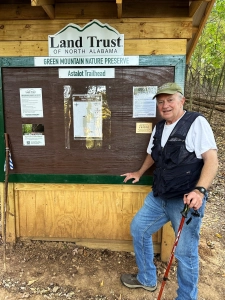Green Mountain Nature Preserve: Spring UAH OLLI Hike through the Halloween Forest
Fellow retired foresters Chris Stuhlinger, Brian Bradley, and I co-led a University of Alabama in Huntsville, OLLI (Osher Lifelong Learning Institute) Nature Hike on April 13, 2025. Our group of 25 covered a little over two miles on what I’ve dubbed the Halloween Forest Trail on the North Alabama Land Trust’s Green Mountain Nature Preserve near Huntsville. We focused on the unusually large smoketree grove, the richly mixed hardwood forest, and the newly-constructed woodland trail and its design. We convened at the Astalot Trailhead.
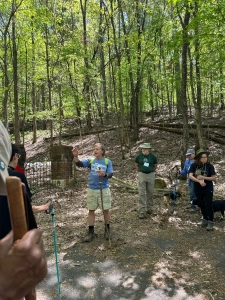
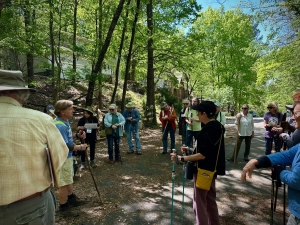
Brian introduced me to the Holloween Forest on October 25, 2024, prompting me to draft a photo essay: https://stevejonesgbh.com/2024/12/16/halloween-forest-of-rare-smoketrees-cotinus-obovatus-on-green-mountain-nature-preserve/
I recorded this 42-second video when we left the trailhead. One of our participants provided a full-throat marching tune.
Brian led the way offering commentary on trail construction and forest ecology.
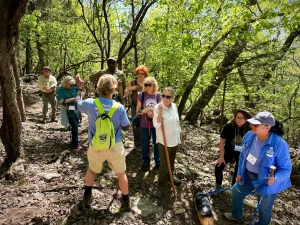
The early growing season hike introduced me to smoketree foliage, the leaves seeming to emerge from this trunk that appears old and rough…not at all vibrant, yet another mysterious element of my Halloween tree.
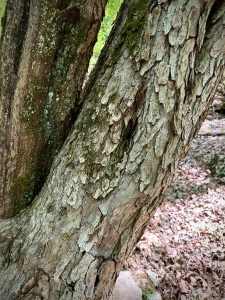
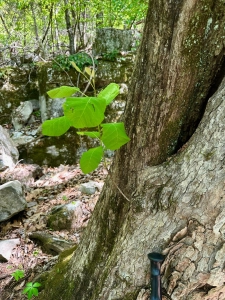
My 58-second smoketree video does not belie the gloomy nature of the smoketrees nor the Halloween mood I perceived in October.
I would not have been surprised to see saprophytic mushrooms (feeding on dead wood) sprouting from this branch. Instead, these leaves are very much alive, as is the tree.
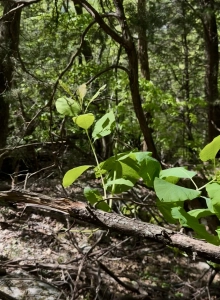
Like so many sylvan haunts (pun intended), the Halloween forest is a place of contrasts. The trail passed a four-by-four foot, five feet tall limestone pillar. Its tabletop supported a rich terrarium surface, populated with woodland stonecrop, resurrection fern, moss, Virginia creeper, and leafcup.
My 57-second limestone pillar video tells the tale.
Woodland stonecrop presents a stunning floral display perched on a barren rock. Life finds a way. One plant’s desert is another’s oasis!
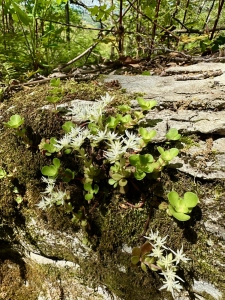
Resurrection fern commonly grows on leaning and horizontal tree branches. I was not surprised to see it thriving on the limestone tabletop (below left). Virginia creeper has found purchase on the pillar among a rock-top resurrection fern colony (right).
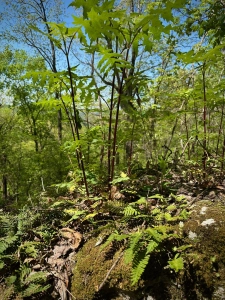
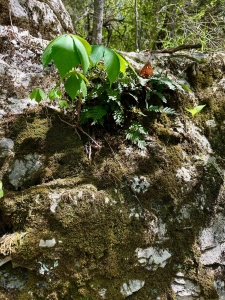
I’ve seen leafcup exceed four-feet on the forest floor. It may be approaching its rock-top terminal height (below).
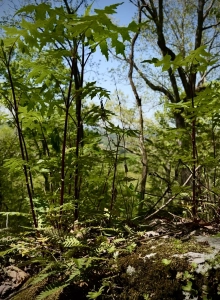
Consistent with the Halloween theme, this grotesque three-foot diameter burl graced a large chinkapin oak 30-feet above the forest floor. Burls result from a micro-organsim (fungus, virus, or bacterium)-triggered unconsolidated wood growth on or within the trunk. A human analogy might be a benign tumor…a non-fatal disfigurement.
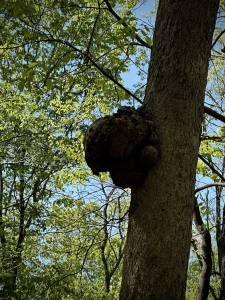
Again, keeping with the spooky-trail theme, here is a patch of Halloween-lovely flowers — American cancer-root. Yes, they are indeed flowers blossoming from a plant. A parasitic flowering plant that flourishes on oak roots. No chlorophyll on this woodland perennial! No wedding bouquet or boutonniere floral destination for these beauties!
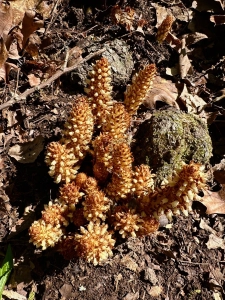
I recorded this 40-second video of American cancer-root, a common sight in the early spring oak woods of northern Alabama.
I delight in musing on the dark side of life and ventures in the woods: tree form oddities and curiosities; macabre woodland fantasies; and stories of the strange and wondrous. Washington Irving is among the masters in spinning such tales of the dark woods, foul and repugnant, harboring ghastly aberrations and savage beasts (The Legend of Sleepy Hollow, 1820):
Certain it is, the place still continues under the sway of some witching power, that holds a spell over the minds of the good people, causing them to walk in a continual reverie. They are given to all kinds of marvellous beliefs, are subject to trances and visions, and frequently see strange sights, and hear music and voices in the air.
I have walked the Halloween Forest, fortunately, only during daylight hours. I wonder how I might fare wandering the trail alone on a gusty late October night?!
All these, however, were mere terrors of the night, phantoms of the mind that walk in darkness; and though he had seen many spectres in his time, and been more than once beset by Satan in divers shapes, in his lonely pre-ambulations, yet daylight put an end to all these evils. (The Legend of Sleepy Hollow)
Some Appropo Closing Reflections
Yesterday (April 29, 2025 as I write this) I covered (walked; hiked; wandered; roamed; sauntered) along a demanding trail at a nearby nature preserve. I did it at my chosen pace, stopping often to snap photos and record brief narrated videos. When Chris and I co-lead an OLLI venture, I rapidly fall behind, being unwilling to forgo gathering images and videos. Moving with the OLLI pack, Chris and Brian handled interpretation. I found myself lagging satisfactorily, pausing with Randy Boyette at a pleasant limestone ledge, together reflecting on John Muir’s thoughts on this practice termed hiking.
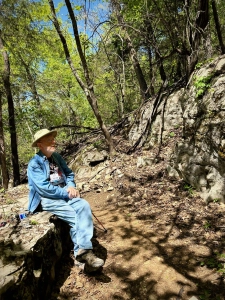
Muir is oft quoted regarding the subject:
I don’t like either the word [hike] or the thing. People ought to saunter in the mountains – not ‘hike!’ Do you know the origin of that word saunter? It’s a beautiful word. Away back in the middle ages people used to go on pilgrimages to the Holy Land, and when people in the villages through which they passed asked where they were going they would reply, ‘A la sainte terre’, ‘To the Holy Land.’ And so they became known as sainte-terre-ers or saunterers. Now these mountains are our Holy Land, and we ought to saunter through them reverently, not ‘hike’ through them.
Henry David Thoreau offered a similar sentiment:
I think that I cannot preserve my health and spirits, unless I spend four hours a day at least – and it is commonly more than that – sauntering through the woods and over the hills and fields, absolutely free from all worldly engagements.
The genius of walking lies not in mechanically putting one foot in front of the other en route to a destination but in mastering the art of sauntering.
I have met with but one or two persons in the course of my life who understood the art of Walking, that is, of taking walks — who had a genius, so to speak, for sauntering.
Every walk is a sort of crusade.
With a dramatic flair, Thoreau laid out the spiritual conditions required of the true walker:
If you are ready to leave father and mother, and brother and sister, and wife and child and friends, and never see them again — if you have paid your debts, and made your will, and settled all your affairs, and are a free man — then you are ready for a walk. No wealth can buy the requisite leisure, freedom, and independence which are the capital in this profession… It requires a direct dispensation from Heaven to become a walker.
Yes, I admit to possessing a spiritual flair for my woodland and wildland saunters. Perhaps when I venture alone, I am traveling with three companions: John Muir, Henry David Thoreau, and Jack Emerson Jones, my dear father who planted the seeds of dramatic flair and spiritual dimension.
Thoughts and Reflections
I offer these observations:
- It requires a direct dispensation from Heaven to become a walker. (Henry David Thoreau)
- Perhaps when I venture alone, I am traveling with three companions: John Muir, Henry David Thoreau, and Jack Emerson Jones, my dear father who planted the seeds of dramatic flair and spiritual dimension. (Steve Jones)
- I don’t like either the word [hike] or the thing. People ought to saunter in the mountains – not ‘hike!’ (John Muir)
- Certain it is, the place still continues under the sway of some witching power. (Washington Irving)
Inhale and absorb Nature’s elixir. May Nature Inspire, Inform, and Reward you!
Note: All blog post images created & photographed by Stephen B. Jones unless otherwise noted. Please circulate images with photo credit: “©2025 Steve Jones, Great Blue Heron LLC. All Rights Reserved.”
I am available for Nature-Inspired Speaking, Writing, and Consulting — contact me at steve.jones.0524@gmail.com
Reminder of my Personal and Professional Purpose, Passion, and Cause
If only more of us viewed our precious environment through the filters I employ. If only my mission and vision could be multiplied untold orders of magnitude:
Mission: Employ writing and speaking to educate, inspire, and enable readers and listeners to understand, appreciate, and enjoy Nature… and accept and practice Earth Stewardship.
Vision:
- People of all ages will pay greater attention to and engage more regularly with Nature… and will accept and practice informed and responsible Earth Stewardship.
- They will see their relationship to our natural world with new eyes… and will understand more clearly their Earth home.
Tagline/Motto: Steve (Great Blue Heron) encourages and seeks a better tomorrow through Nature-Inspired Living!
Steve’s Four Books
I wrote my books Nature Based Leadership (2016), Nature-Inspired Learning and Leading (2017), Weaned Seals and Snowy Summits: Stories of Passion for Place and Everyday Nature (2019; co-authored with Dr. Jennifer Wilhoit), and Dutton Land & Cattle: A Land Legacy Story (2023) to encourage all citizens to recognize and appreciate that every lesson for living, learning, serving, and leading is either written indelibly in or is powerfully inspired by Nature. All four of my books present compilations of personal experiences expressing my deep passion for Nature. All four books offer observations and reflections on my relationship with the natural world… and the broader implications for society. Order any from your local indie bookstore, or find them on IndieBound or other online sources such as Amazon and LifeRich.
I began writing books and Posts for several reasons:
- I love hiking and exploring Nature
- I see images I want to (and do) capture with my trusty iPhone camera
- I enjoy explaining those images — an educator at heart
- I don’t play golf!
- I do love writing — it’s the hobby I never needed when my career consumed me
- Judy suggested my writing is in large measure my legacy to our two kids, our five grandkids, and all the unborn generations beyond
- And finally, perhaps my books and Blogs could reach beyond family and touch a few other lives… sow some seeds for the future
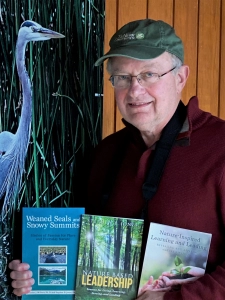
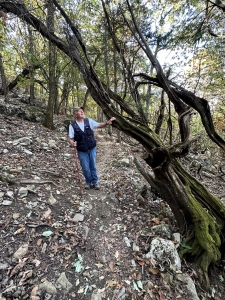
Photo at right above from my October 2024 visit — me standing under a macabre smoketree.

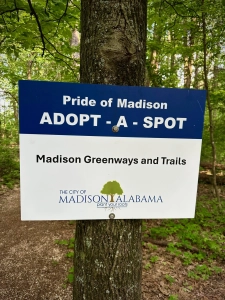
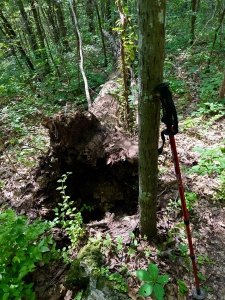
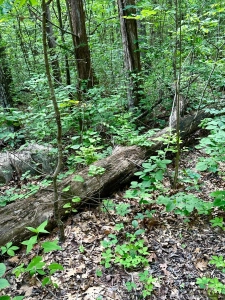
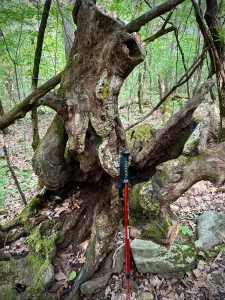
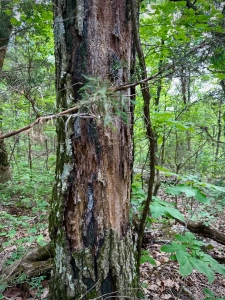
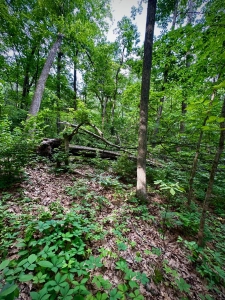
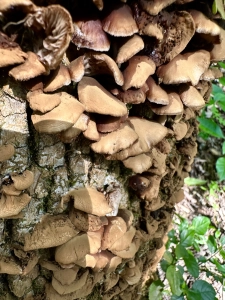
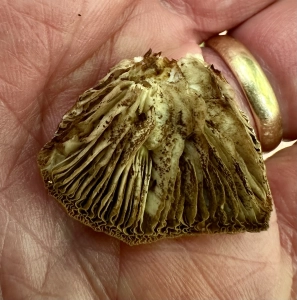
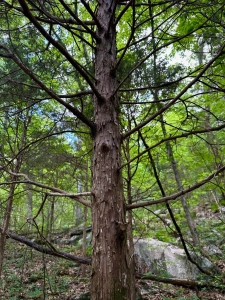
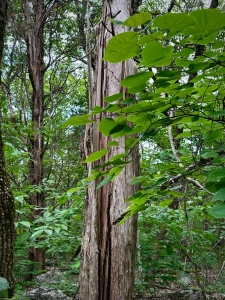
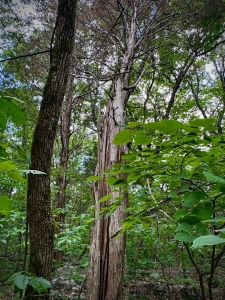
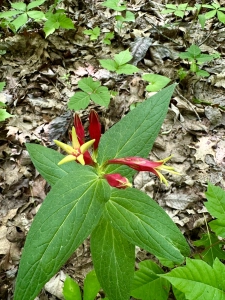
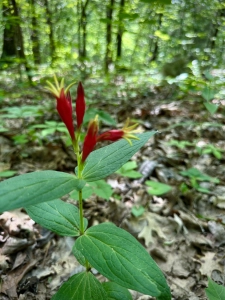
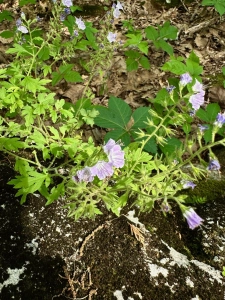
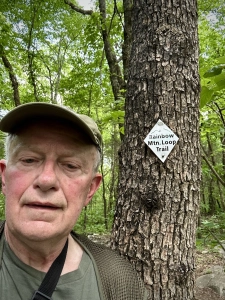
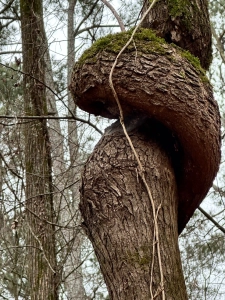
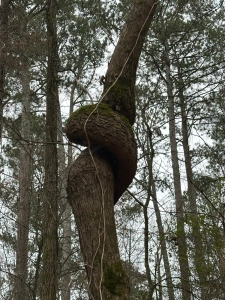
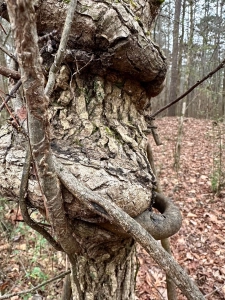
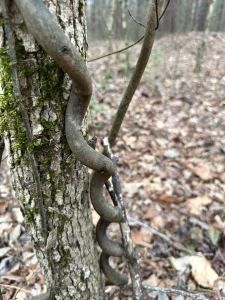
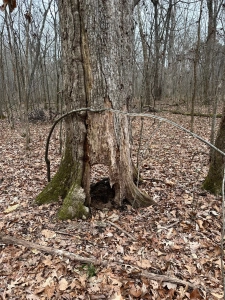
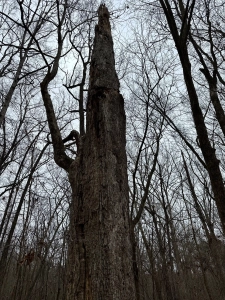
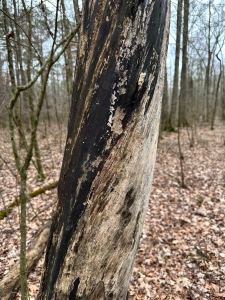
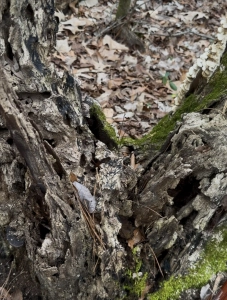
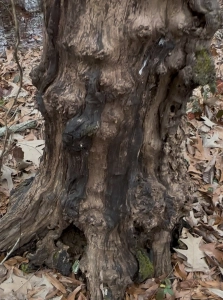
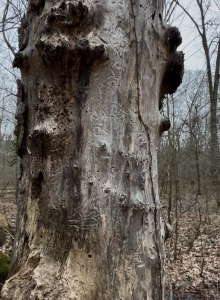
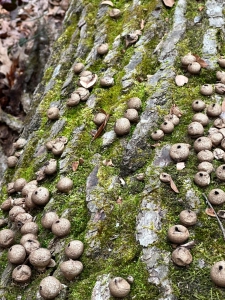
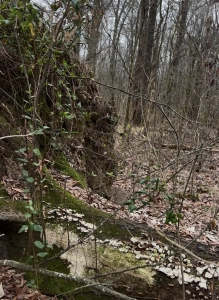
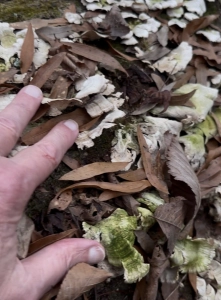
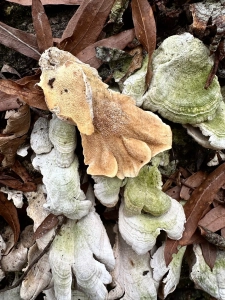
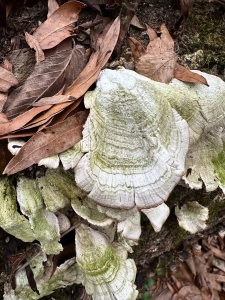
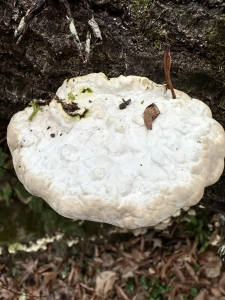
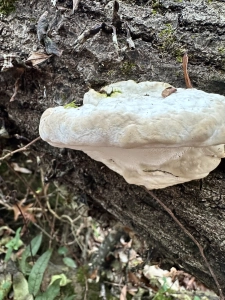
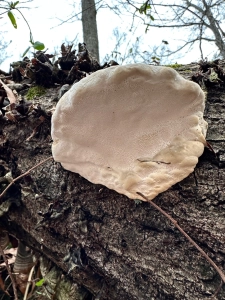
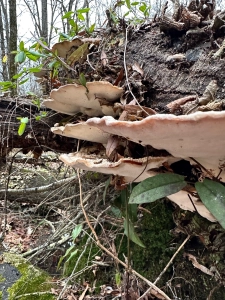
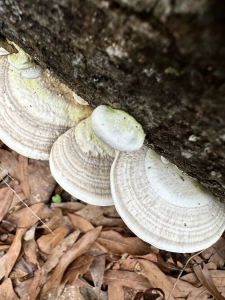
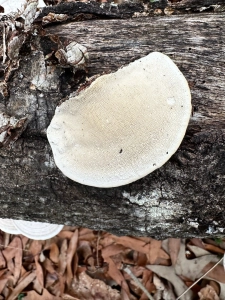
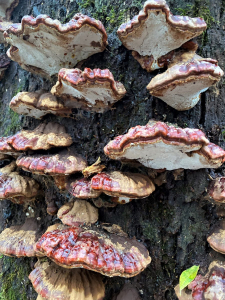
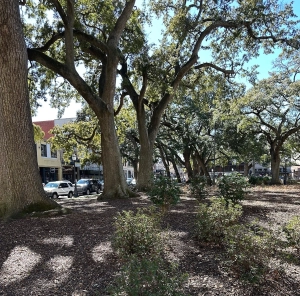
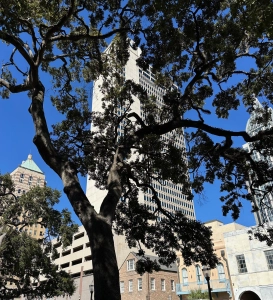
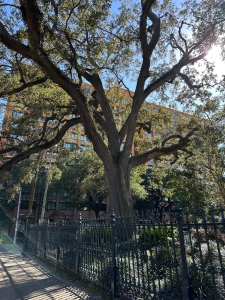
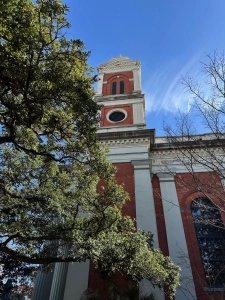
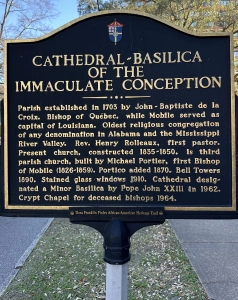

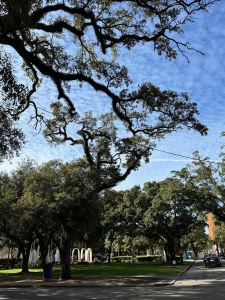
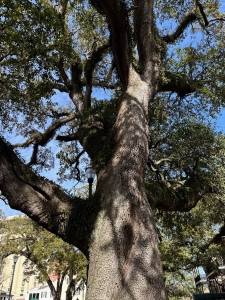
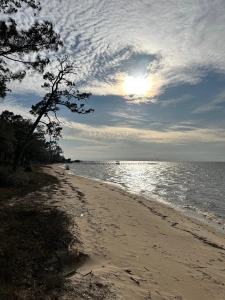
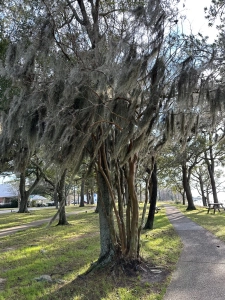
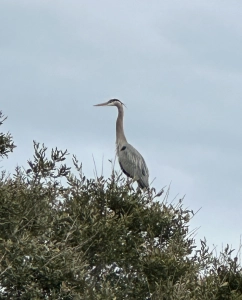
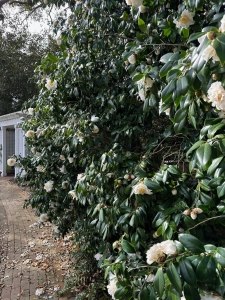
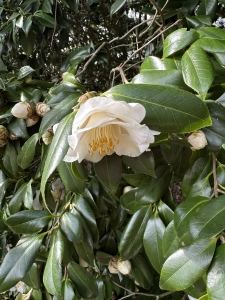
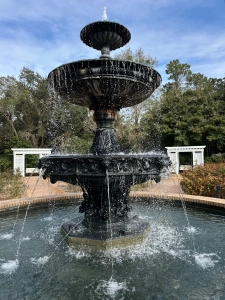
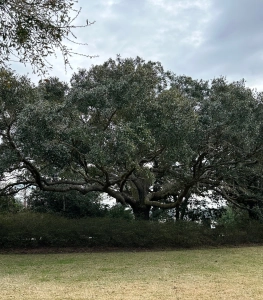
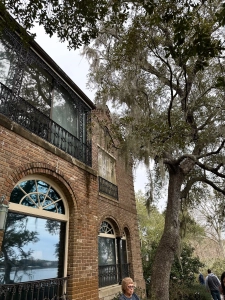
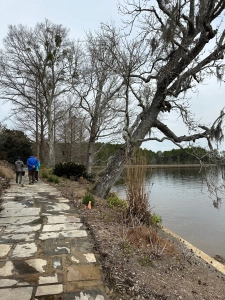
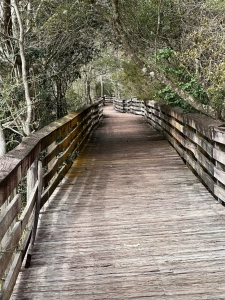
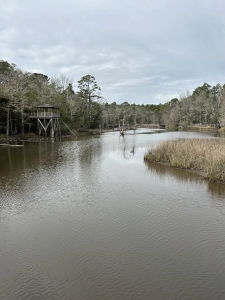
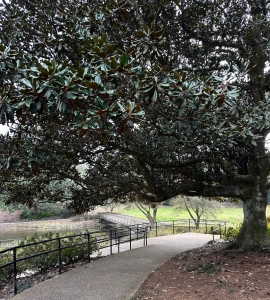
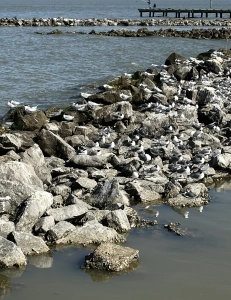
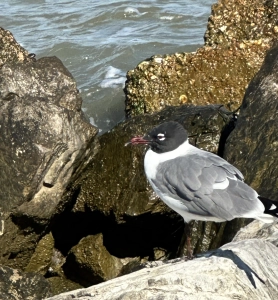
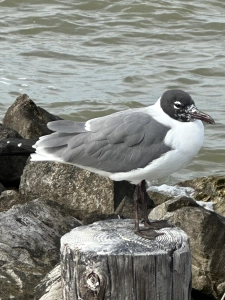
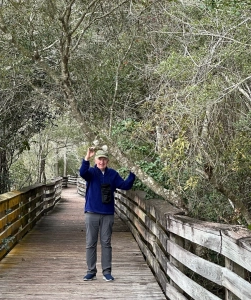
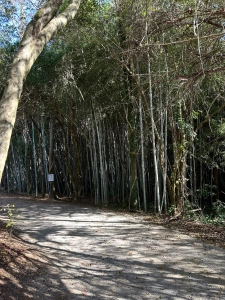 .
.